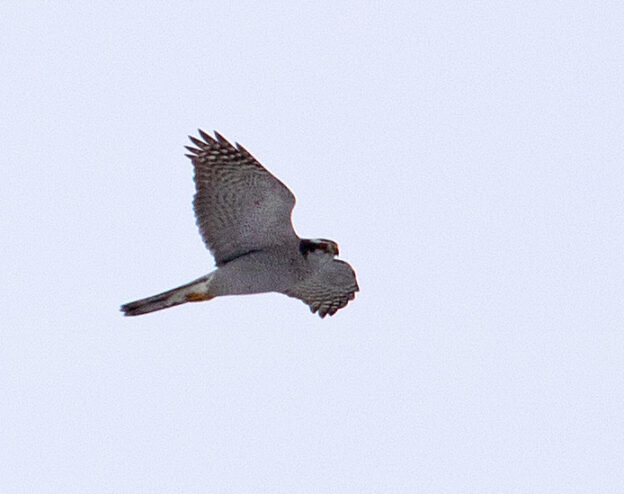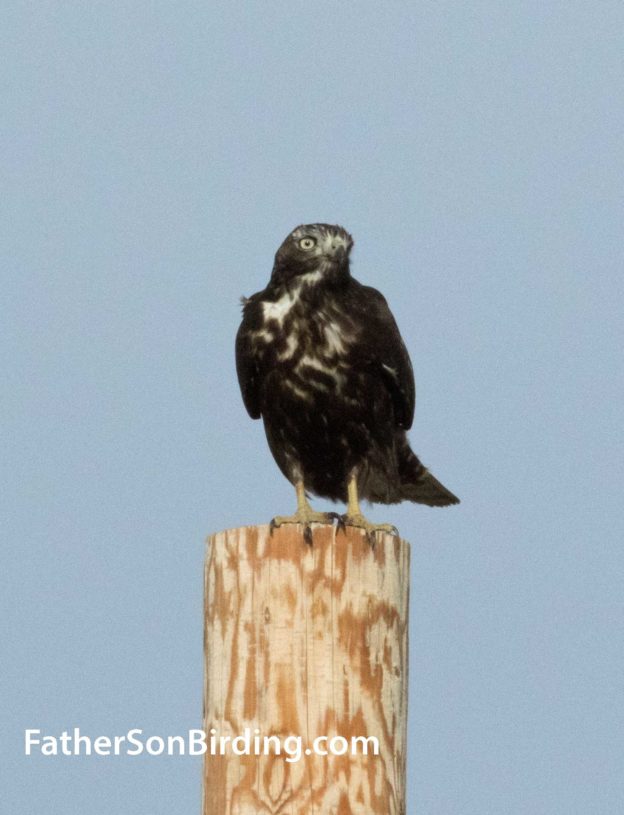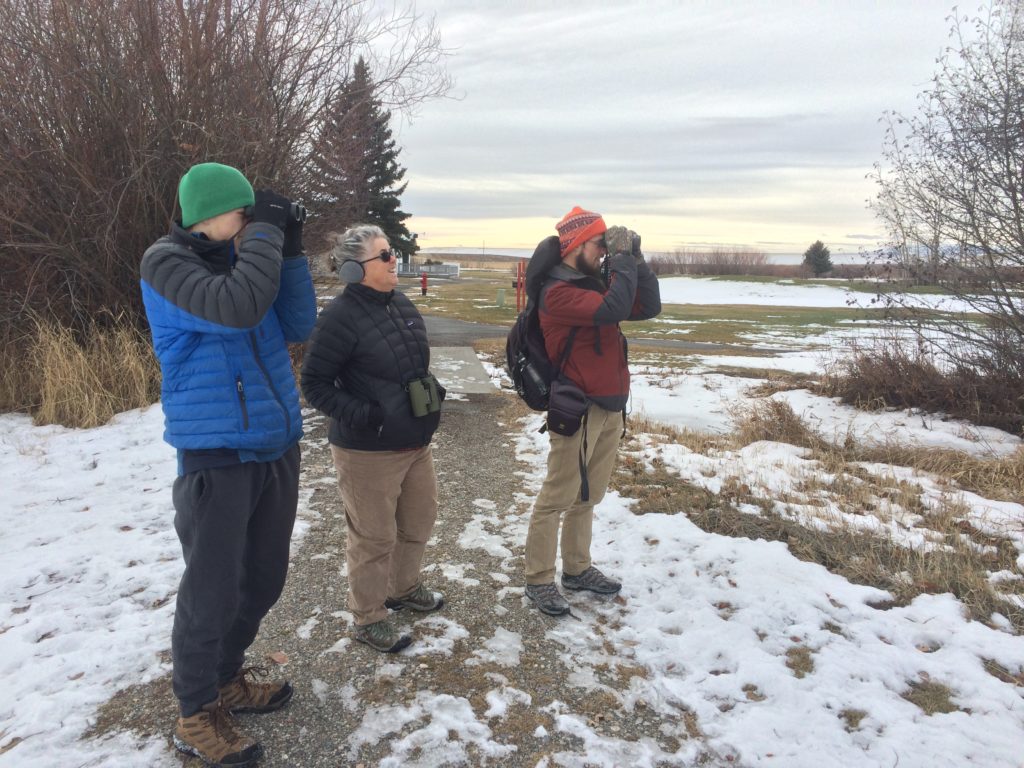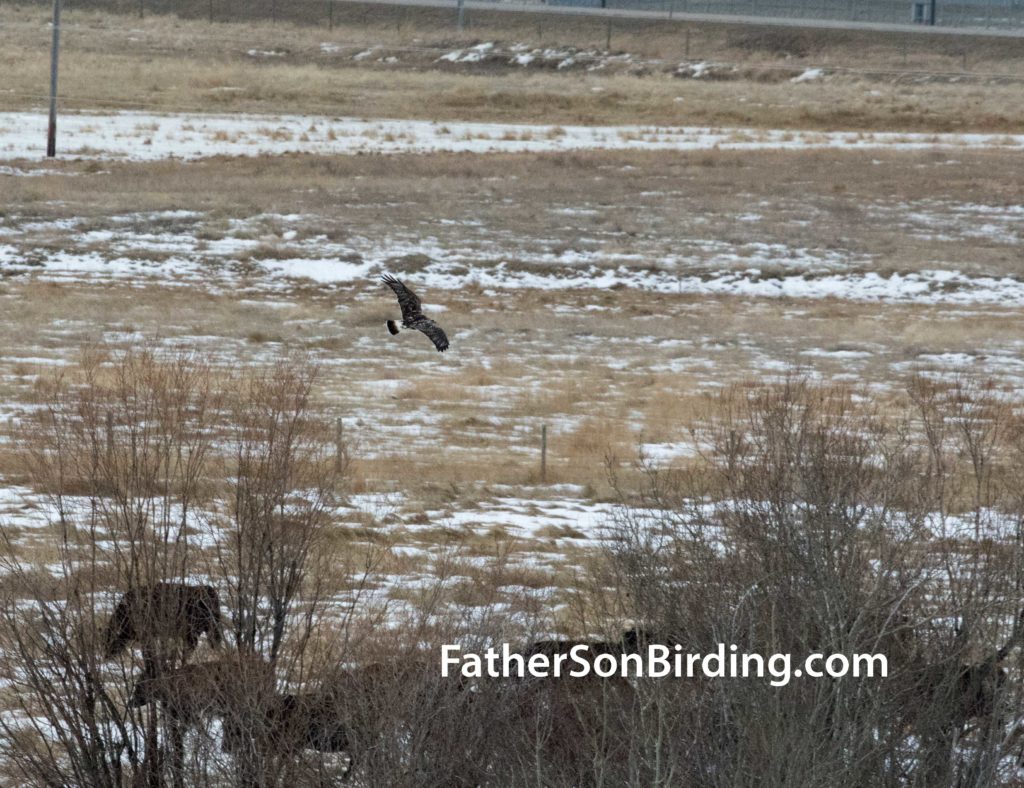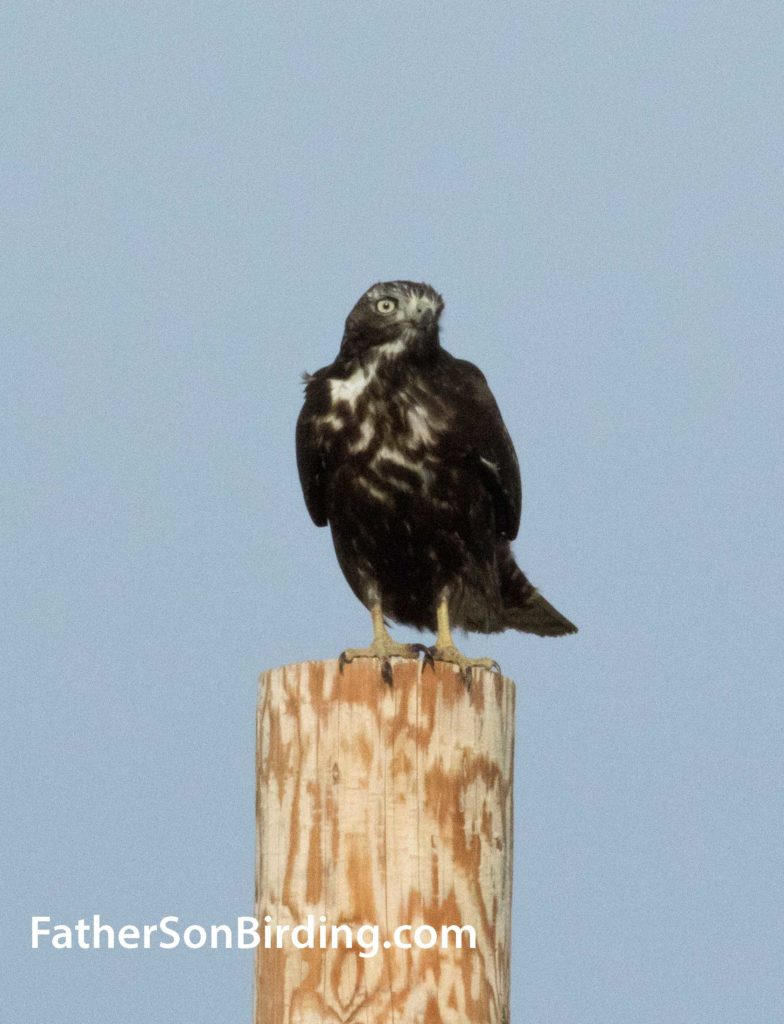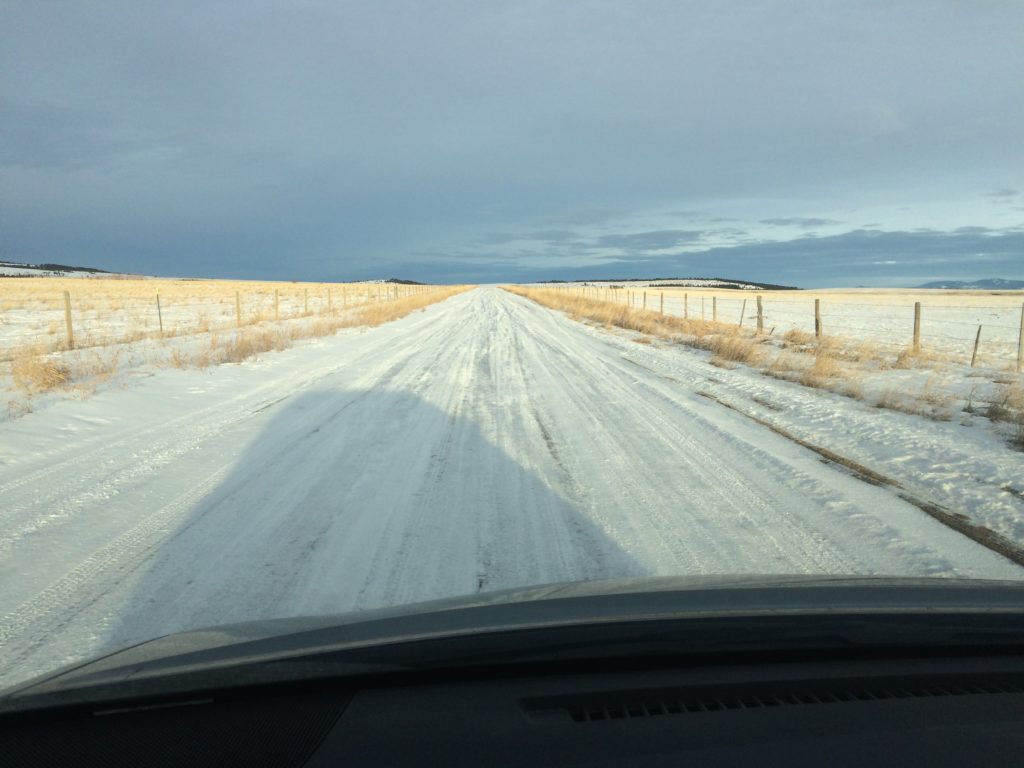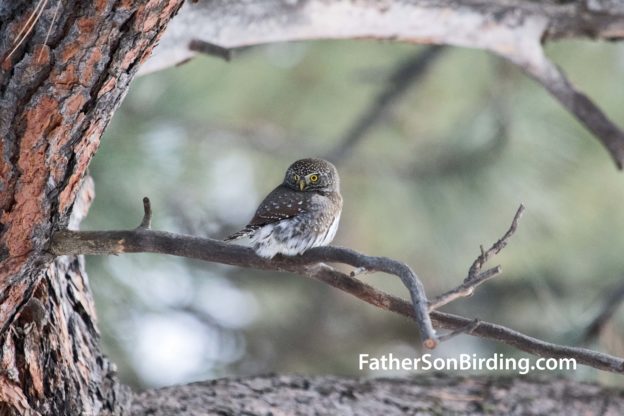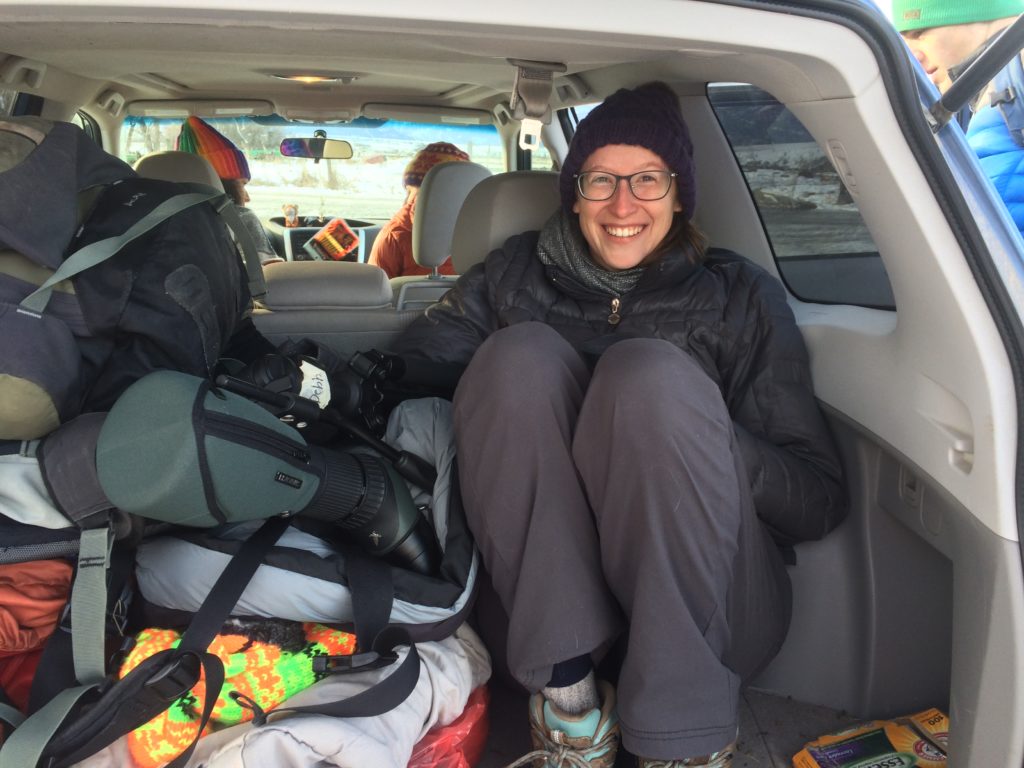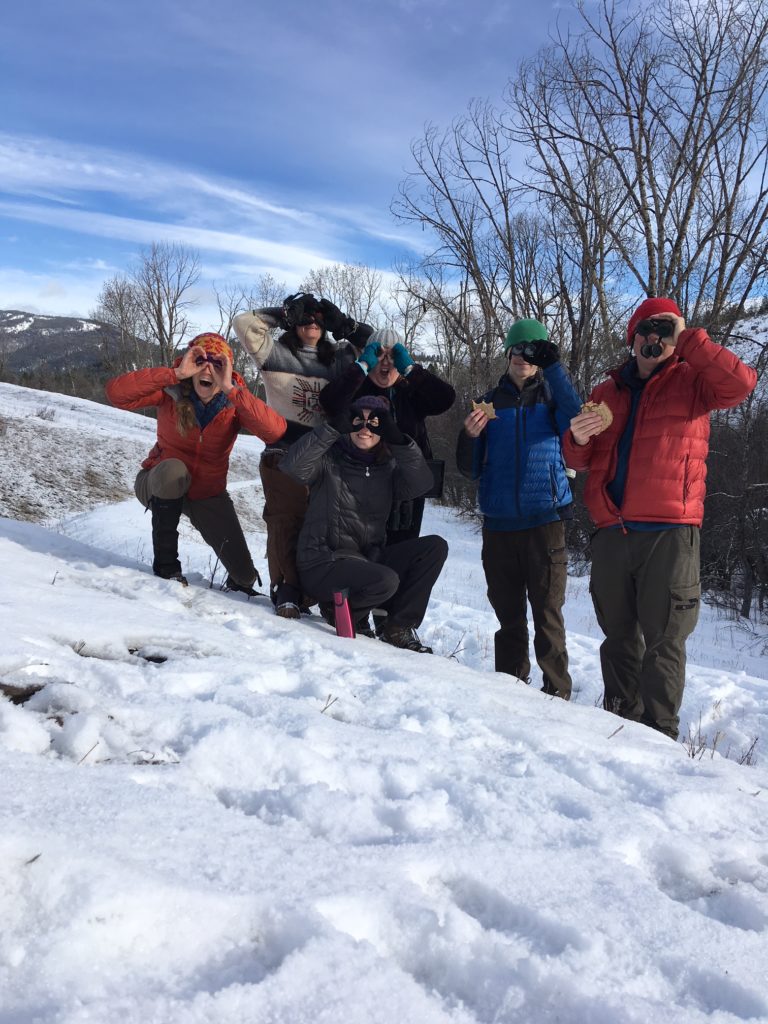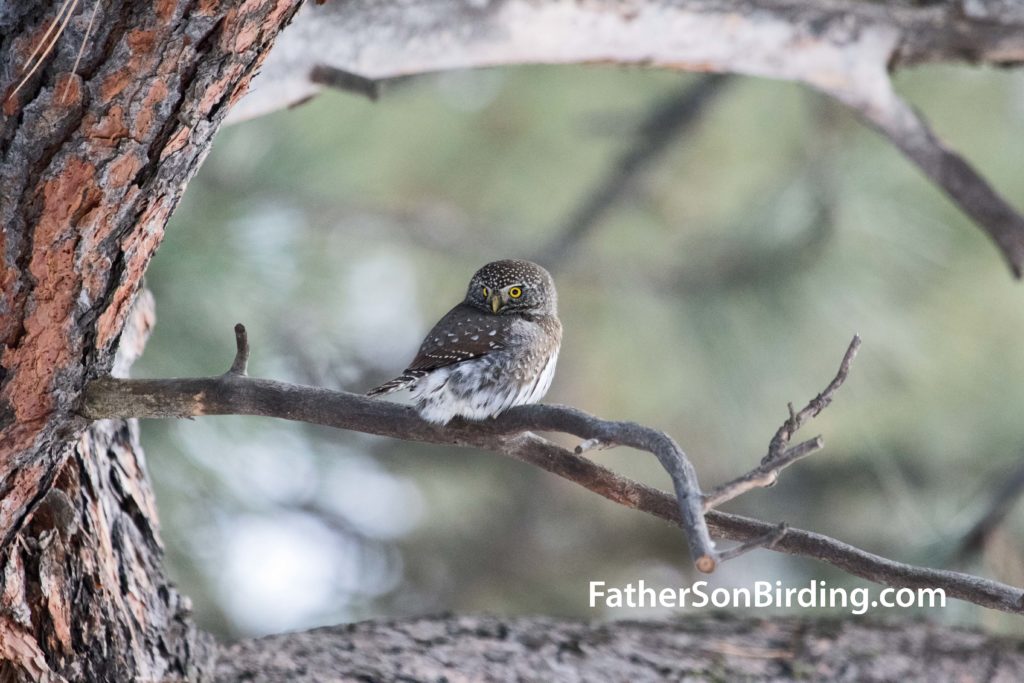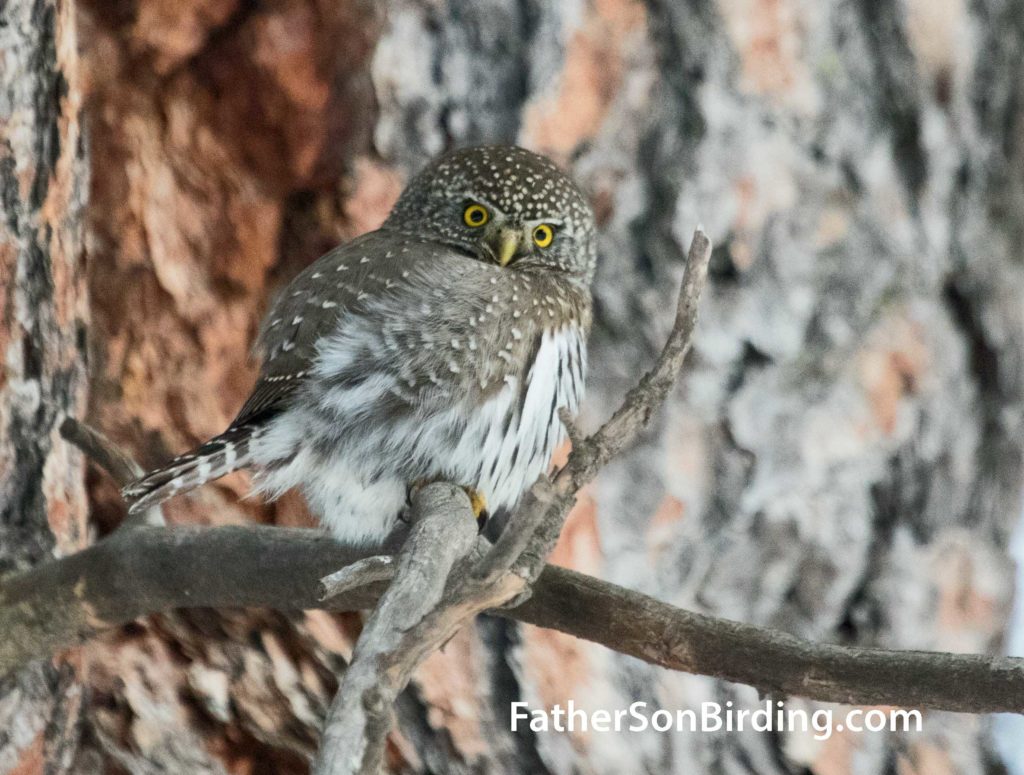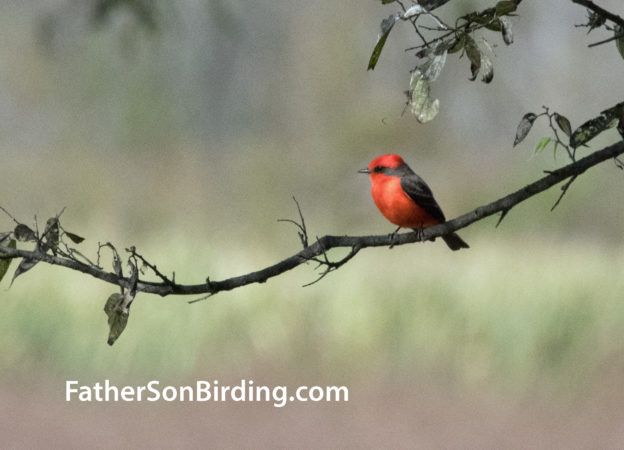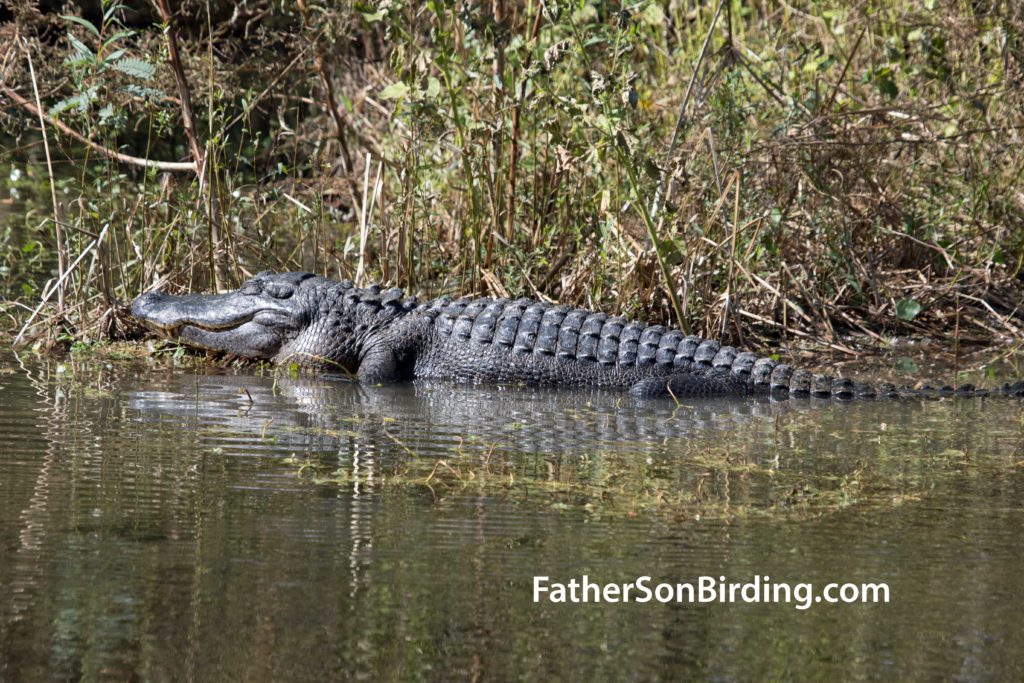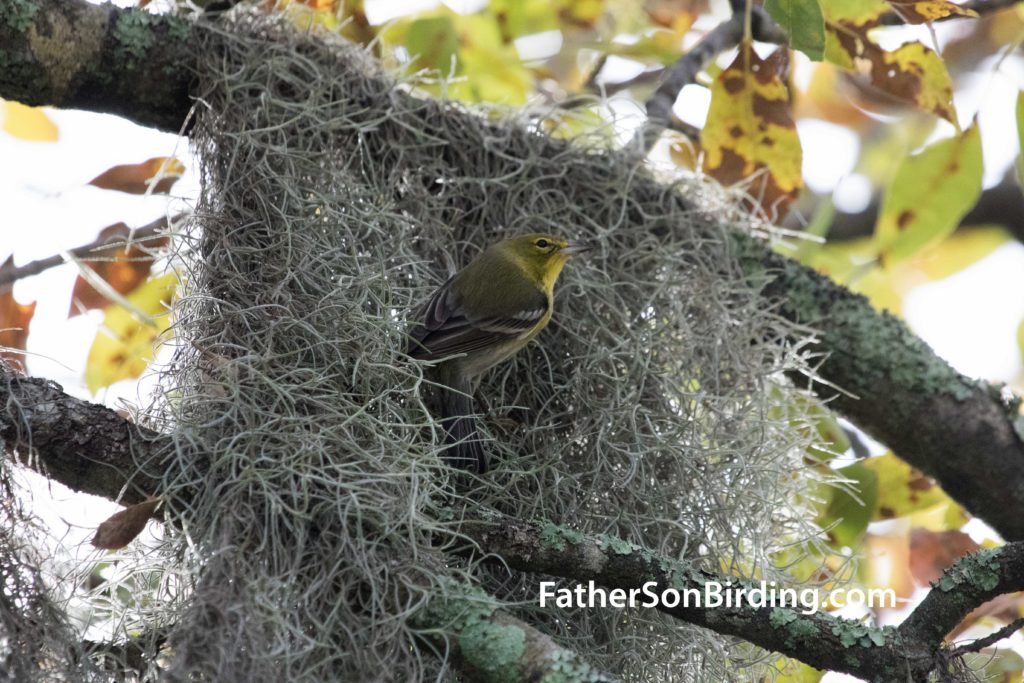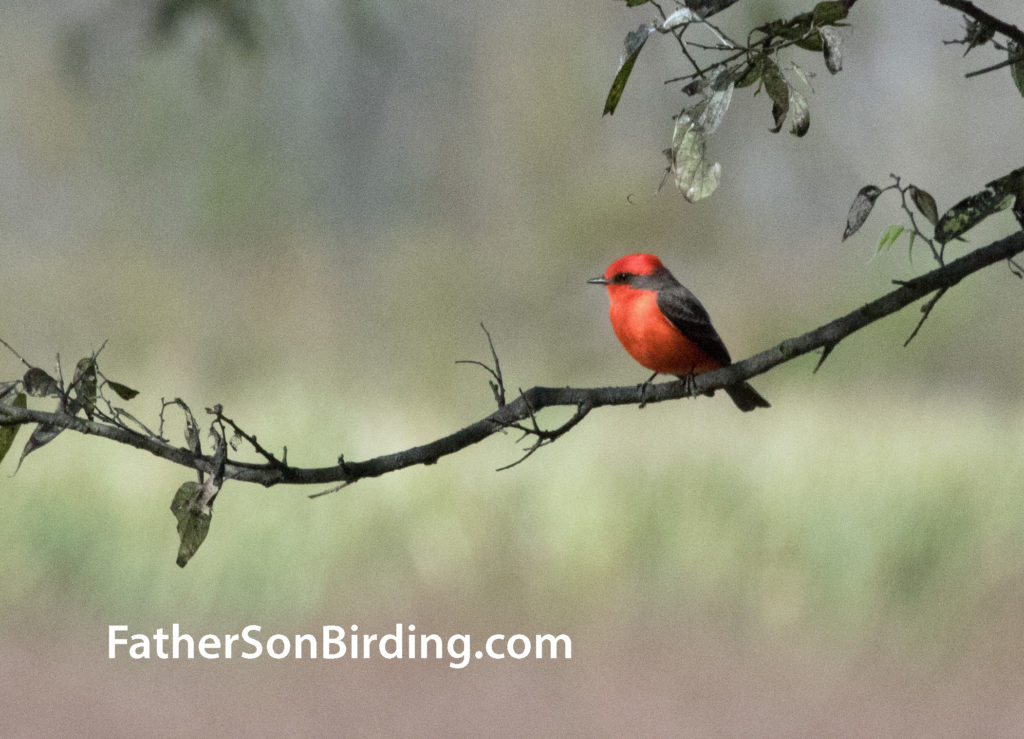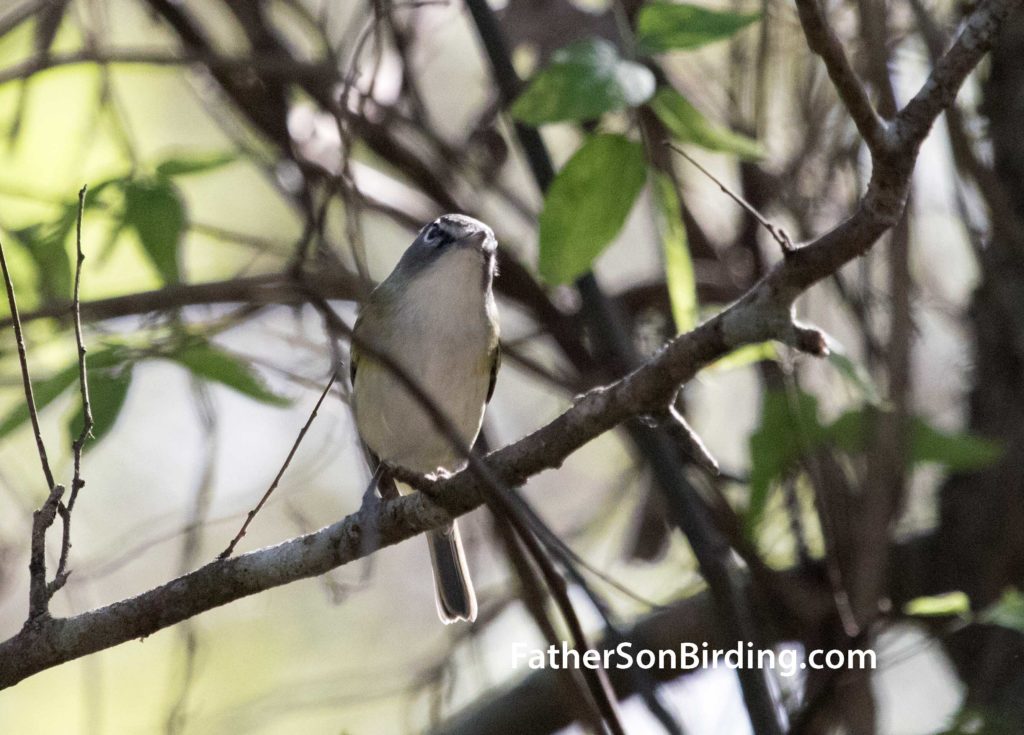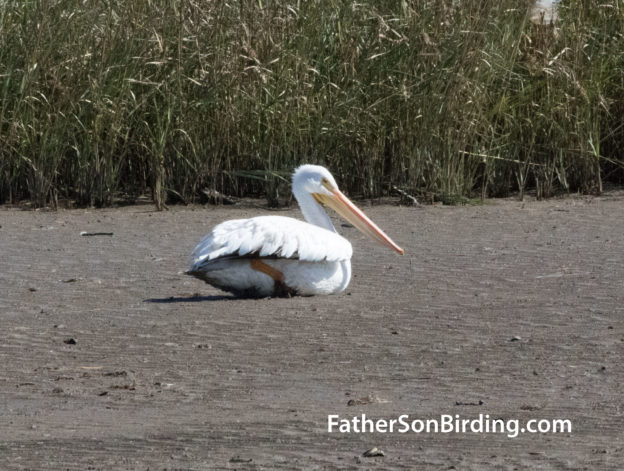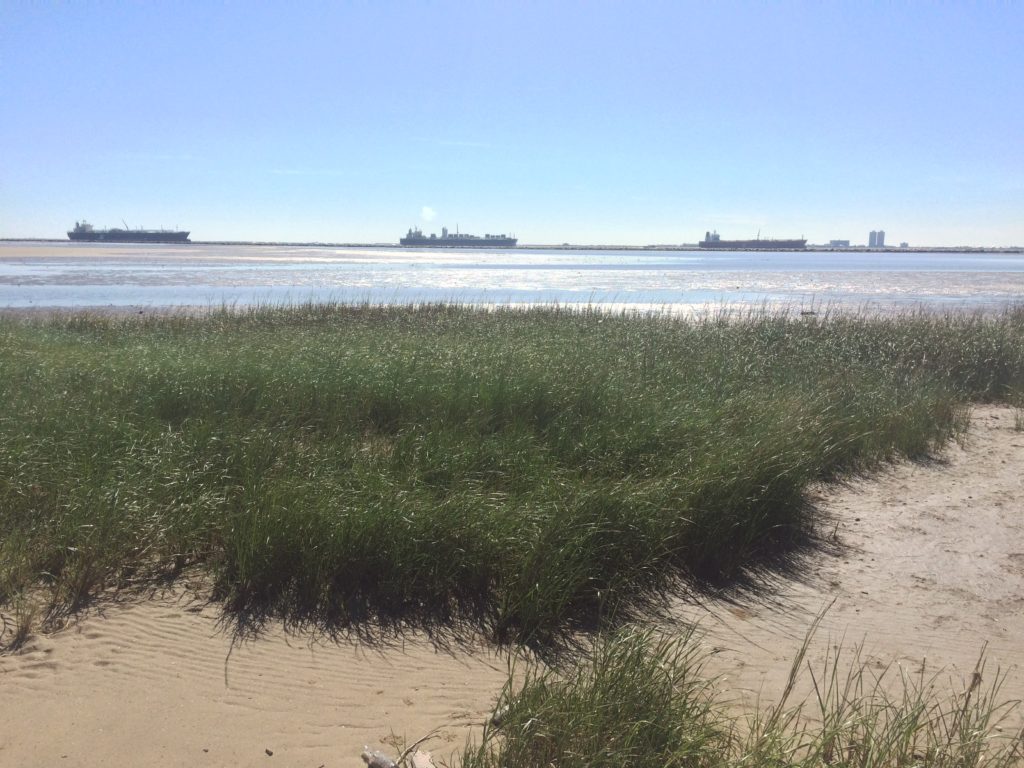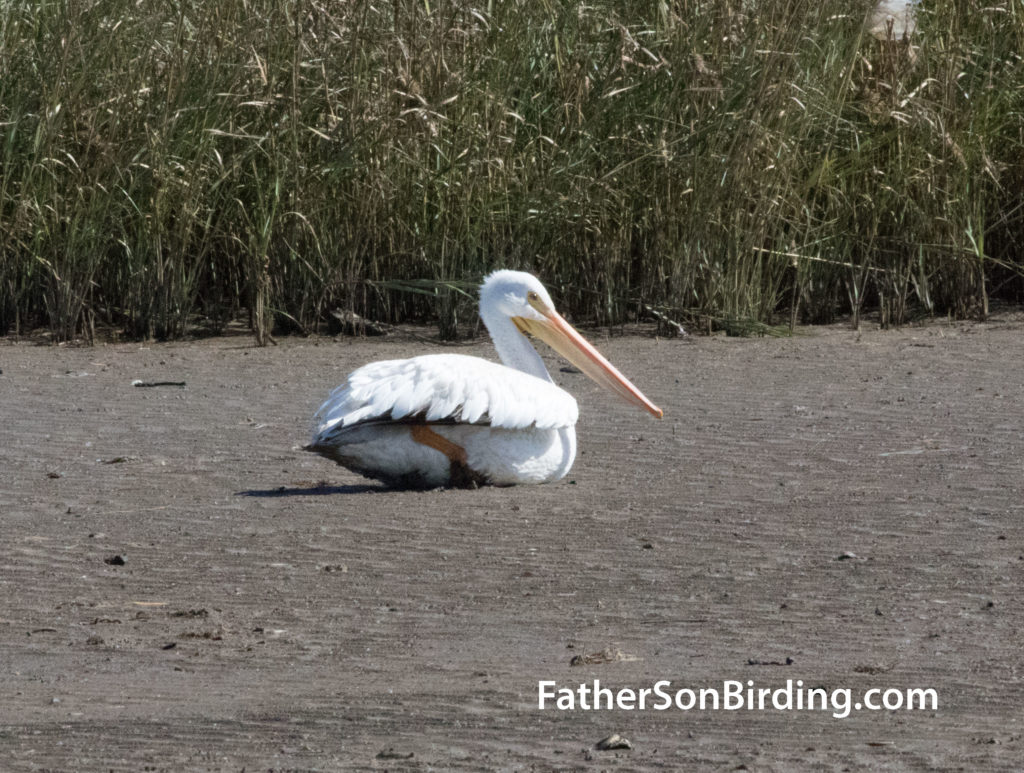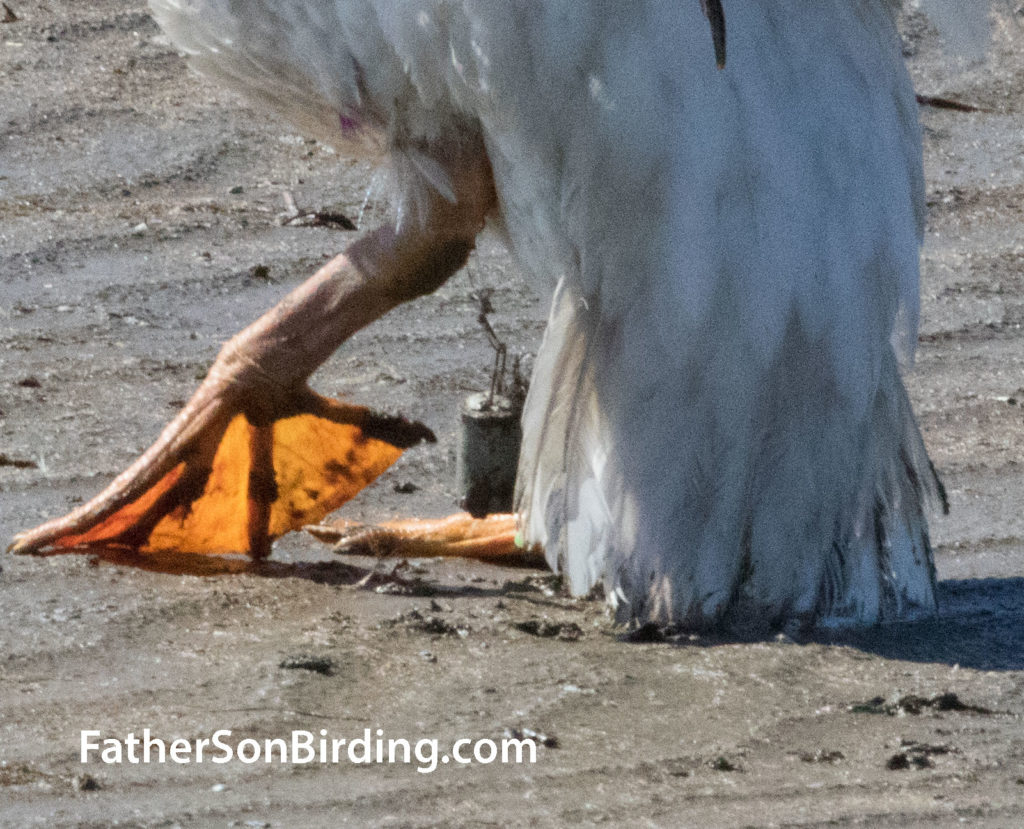To Subscribe to FatherSonBirding—and nothing else—please fill in your email address in the box down in the column to your right. Thanks!
As we pulled out of the garage, my dad asked, “So, where to? Mt. Sentinel for rosy-finches? The Gravel Quarry?”
“How about we go look for the Great Gray Owl at Maclay Flat?” I asked.
“Well, okay, even though Maclay always disappoints me—it’s kind of empty.”
This was true—while we had spotted excellent birds at Maclay, including Barred, Great Gray and Northern Pygmy-Owls, it generally didn’t hold up in terms of overall species. For instance, on the day we saw the Barred Owl, we only logged about five species. Dog-walkers and cross-country skiers also loved Maclay, and the number of people might have affected bird numbers.
Fortunately, when we pulled up in the parking lot with our dog Lola, it seemed barren of people—maybe people had other things to do with their holiday break. A thin, fluffy layer of snow covered the ground and trees, and a few clouds dotted the sky. We pulled on our snow boots and layers, then trudged into the forest, our eyes open for large gray shapes watching us from the upper branches.
Our year lists sat within reach of our Montana year records, with my dad and I needing two and three, respectively. I hoped we could get Merlin and Golden-crowned Kinglet today, which would buff my dad’s list. Other birds that topped our Montana needs included Ruffed Grouse, Northern Goshawk (which we had unsuccessfully chased up Pattee Canyon a few days earlier), Gray-crowned Rosy-finches (which we could hopefully nab with a hike up the “M”), Gyrfalcon and Snow Bunting (grrrrrrr). A ski trip could also get my dad Gray Jay.
Right beyond the parking lot we encountered one of Maclay’s famous mixed flocks, containing three Black-capped Chickadees, two Mountain Chickadees, Red-breasted Nuthatches and a Brown Creeper, which was a nice surprise.
My dad and I bushwhacked through the trees and slid down ditches searching for the owl, or any owl. We investigated a stand of aspen near the edge of a huge field that had cavities that should have contained screech-owls, but to no avail. From a distance, though, we did spot a handsome adult Bald Eagle perched on a huge snag.
Suddenly, we spotted a raptor zip out of the trees, chasing a collared-dove. I tore off my mittens and set my camera on overexposed, then snapped as many photos as I could. We’d had a similar experience in this same field a few years ago, but the look had been too quick for identification. This time we were ready.
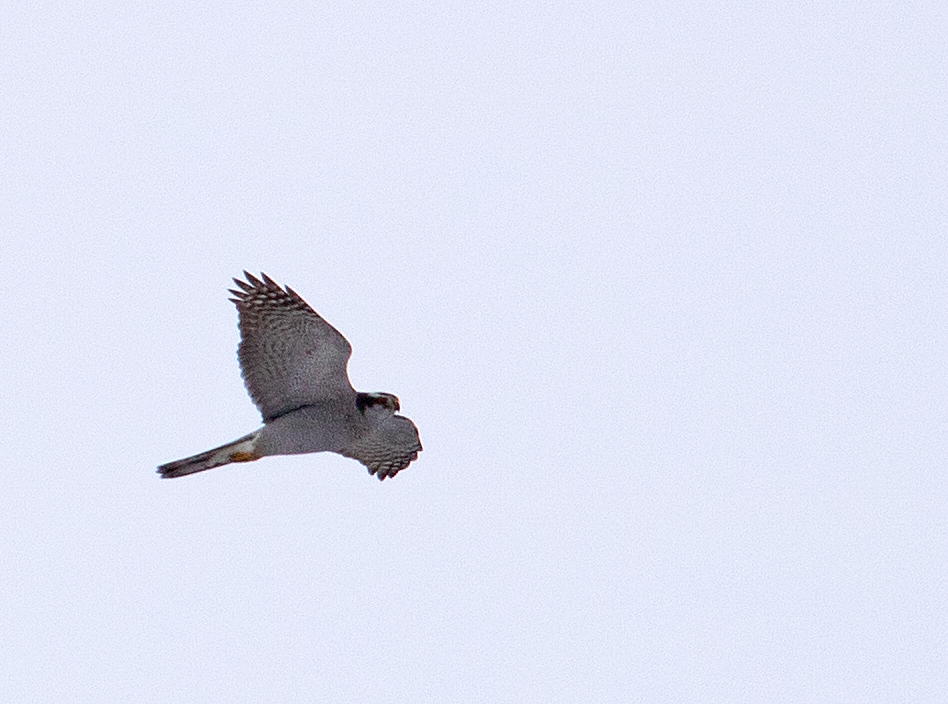
The bird sported a long tail and slim wings, and was fairly large—definitely a falcon or accipiter species. Remarkably, my photos showed a slate-gray body and a black eyeline. Northern Goshawk! We’d never seen this bird before, and it was one of our long-time nemesis birds. Finally, we’d gotten to see this rare raptor in action!
Seeing the goshawk definitely made up for not spotting the Great Gray. As we walked back to the car, we finished up the birding with another great mixed flock, including two Downy Woodpeckers. Happy New Year!

